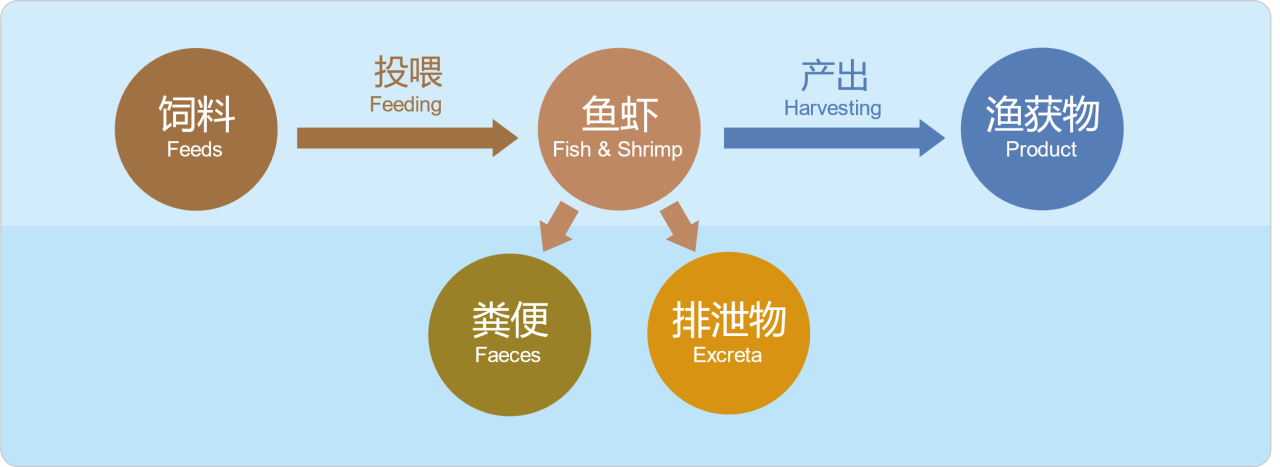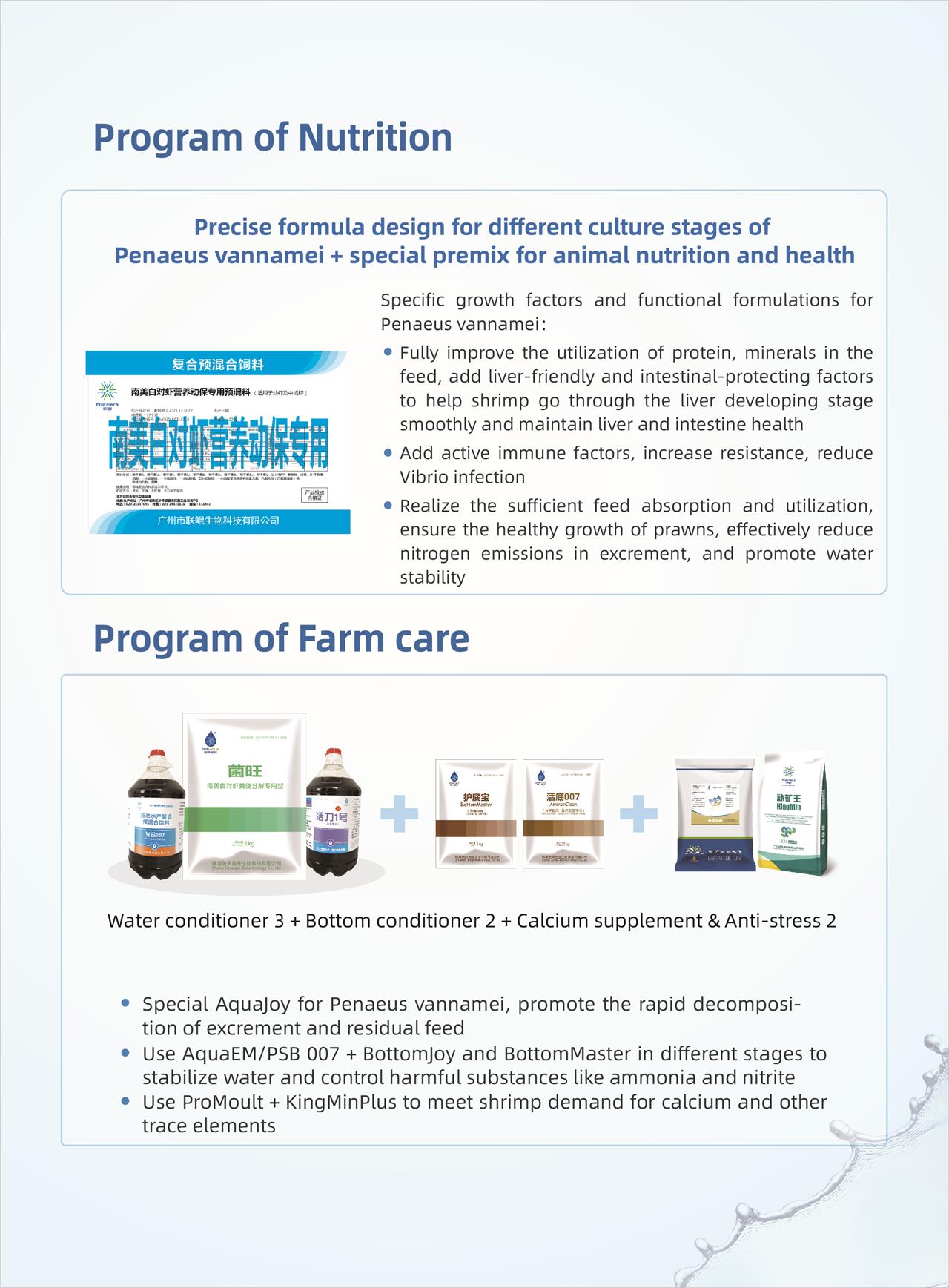The background of Nutrition & Farm care
Currently, the cost of renting ponds for aquaculture in China is rising steadily while productivity and feed consumption are increasing, creating significant practical issues:
The increase in feeding quantity has the effect of dramatically accelerating the amount of excrement expelled per unit of water body, which worsens water quality and leads to frequent fish disease, abuse of antibiotics and chemicals, and major issues with the safety of aquatic products.
The water is seriously polluted and released to the environment, which causes huge pressure on environmental protection. We know that the source of water quality deterioration is feed, but less use of feed will affect the growth of fish and shrimp. To solve this contradiction, we must take the initiative to intervene by using good feed and improve the water quality at the same time.
However, the current situation of the industry is that the feed formulator have a shortage understanding about water conditioning, and the aquaculture technician don’t have sufficient knowledges about feed. Therefore, it is necessary to systematically study the interaction between nutrition of aquatic feed and water quality, and to expand the path of stool utilization brought by feed which is the main source of water pollution, we will develop farm care product and formulate practical plans according to the background, so as to achieve the target "healthy, controllable, and beneficial".
1. What’s Nutrition & Farm care
Nutrition & Farm care refers to improving the utilization of nutrients through comprehensive feed technology to reduce waste emissions. Then through animal health products and technologies continue to decompose and transform the emissions until they are reused by fish and shrimp. In November 2019, the conception of Nutrition & Farm care was proposed to the industry at the Wuhan Conference for the first time by Nutriera Group.
Compared with the deterioration of water quality and the frequent occurrence of diseases caused by the traditional culture model, the high-efficiency model of Nutrition & Farm care can effectively promote the transformation of waste into treasure, and ultimately achieve three goals like environmental protection (good water quality, easy to meet standards), health (less disease, no drugs), and efficiency (high production, good quality). The differences between the two modes can be seen from the following figures:

Figure 1. Traditional farming model

Figure 2. Nutrition & Farm care high-efficiency mode
2. Key points of technical design of Nutrition & Farm care high-efficiency mode
2.1. Investigate source analysis of pollutants in aquaculture water
It is mainly the feces excreted into the water body after the feed is digested and absorbed by fish and shrimp, as well as the solid pollutants and dissolved pollutants formed by the unutilized residual feed and remains in water.
2.2. Improve the treatment capacity of pond pollutants
The key is to reduce input volume and dispose effluent efficiently.
2.21 How to reduce emissions
Method 1: Improve feed quality, including balancing the nutrition from feed formula, adding digestive enzymes, selecting high-quality raw materials to improve feed producing process to improve feed digestion rate.
Method 2: Improve feeding management, including precise design of feed formulations based on different growth stages, scientific/intelligent feeding, and control of fish size, etc.
2.22 How to deal with the effluent efficiently
Method 1: to promote the conversion and reuse efficiency of effluent, is mainly to optimize the application of biological floc technology to maximize the re-decomposition and reuse of effluent.
Method 2: Effectively regulate the release and transformation of effluents, mainly through the application of integrated sediment restoration technologies such as shielding, physicochemical improvement, passivation, etc. To limit the formation of bioavailable nutrients and control the release of nutrients.
Method 3: Optimize the culture model and carry out ecological farming, such as carrying out stereoscopic culture, and optimizing the stocking ratio of surface fishes and bottom fishes, etc.
